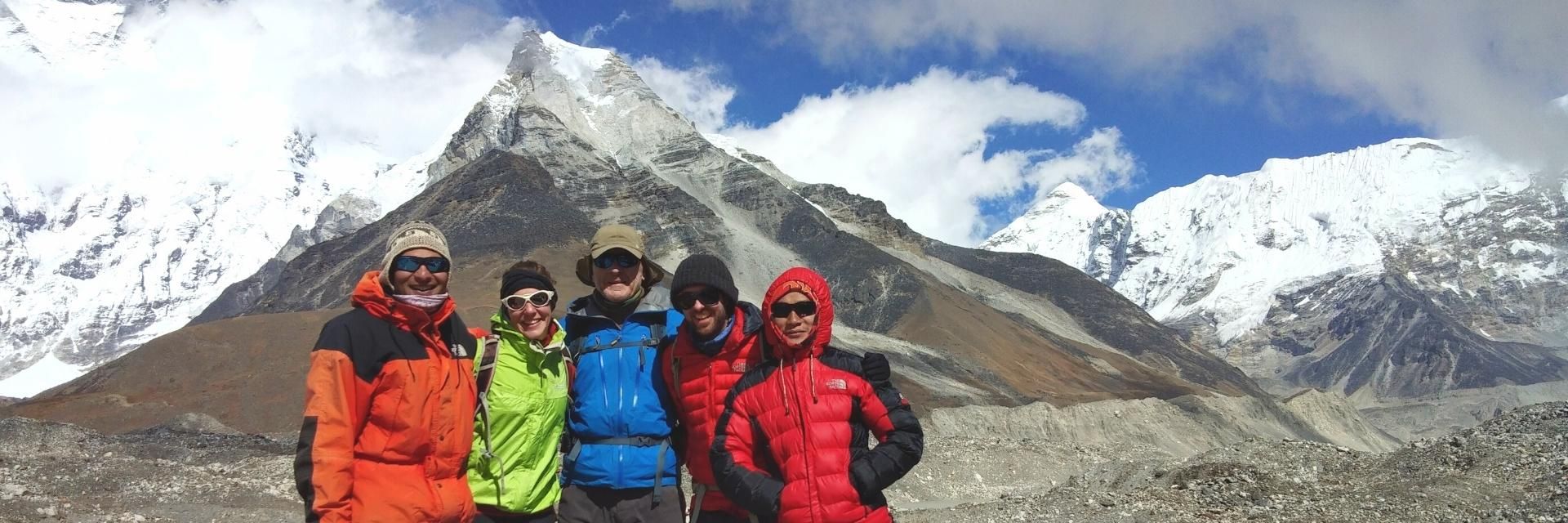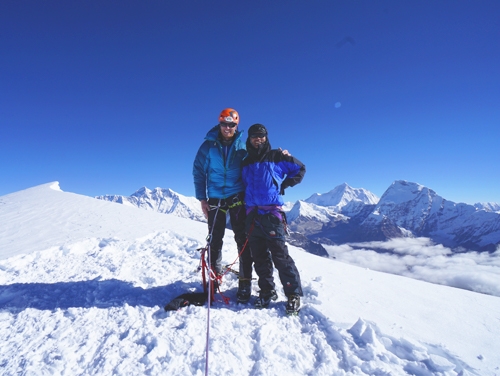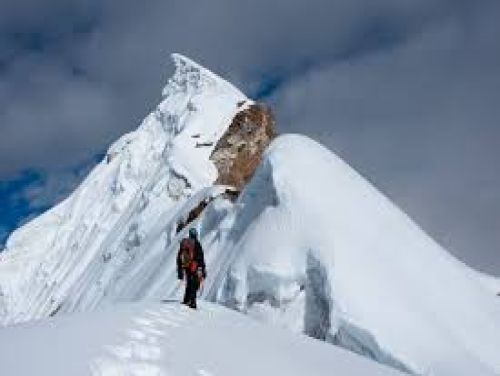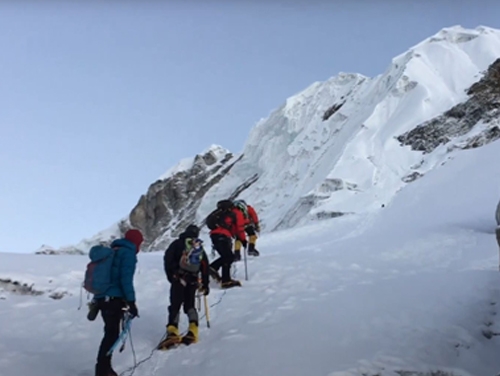Summary of Island Peak Climb and Everest Three Passes Trek
Climbing Island Peak and Everest Three Passes Trek leads us to a number of stunning blue lakes in the Gokyo valley, the well-known Renjo La (5,360m), Cho La (5,420m), and Kongma La (5,535m) pass, as well as the base camp of Mount Everest before ascending the Island Peak (6,189m).
In addition to Island Peak and Everest Three Pass, our 20-day climbing expedition also includes Gokyo Ri (5357m) and Kala Patthar (5,545m), which offer breathtaking up-close views of the Himalayas. Island Peak is an island because it is encircled on two sides by the majestic Lhotse, Nuptse South Wall to the north and Baruntse to the south.
The Khumbu region's highlights are covered by this tour. This walk might be difficult due to the elevation and terrain. But it will be worth it for the distinctive scenery and tranquility adjacent to the pristine lakes.
The Himalayan Odyssey, along with knowledgeable trekking guides and porters, organizes the Island Peak Climb through Everest Three Passes. Explorers searching for a strenuous trek with island climbing opportunities can consider an Everest base camp Island peak climbing trip.
Route Outline for Island Peak Climb and Everest Three Passes Trek
Island Peak Climb and Everest Three Passes Trek Package last for 20 days. We advise you to provide extra time in case a domestic flight is delayed or there are any other disasters caused by nature. After a flight from Kathmandu, the trek begins at Lukla. The Everest Three Passes Trail is then continued once we ascend to Namche Bazaar.
Island Peak Climb and Everest Three Passes Trek Difficulty
Climbing Island Peak and Everest three High Passes is difficult. You can reach the peak if you are in good physical shape. If you have already hiked to a high altitude, this is a fantastic challenge. The initial portion of the journey is physically demanding because you are trudging up rugged terrain at a height of more than 5000m. This section, however, is clearly not technical. You must equip crampons and a rope once you arrive to the glacier field. Throughout this part, there is a chance of falling into crevasses coated with snow.
Although it might feel daunting, you will always be on safety lines. You eventually arrive at the headwall's base. This portion of the climb is the most difficult due to the steep slope and thin air. Although the climbing route is made safe by fixed lines, getting to the top ridge will require a lot of effort and willpower. It is best suited for hikers who have some prior experience utilizing fixed ropes and crampons when hiking at high heights. Given that training will be provided, this is not necessary.
Island Peak Climbing and Everest Three Passes Trek
Food and Accommodation during Island Peak Climb and Everest Three Passes Trek
If you don't mind staying in a simple teahouse run by locals throughout the Island Peak Climb and Everest Three Passes Trek, that is. As you make your way up to the high-altitude areas with a small population, the lodges you may expect to find have cozy rooms, twin beds, mattresses, blankets, and a communal bathroom. However, you will have to spend the night in a tent while climbing the peak.
The walk will go closer to rural areas with few transit choices, where there may not be many options for food and shelter. One of the meals you'll have while on your hikes is dal bhat, a typical Nepalese dish.
Emergency evacuation while doing Island Peak Climb and Everest Three Passes Trek
In Nepal, helicopter evacuations are the usual maximum method of managing an emergency, and there may be a well-set-up infrastructure for managing logistics. Incidents are uncommon, and Island Peak and Everest trek is positioned in a well-supported area of Nepal, along with the Himalayan Rescue Center in Pheriche.
It is virtually crucial to have travel insurance in the area and to be clear about your vacation spot and what you're doing to the insurance company. On the occasion of an emergency, the team, in addition to the guide, porters, and everybody else around might be accountable for moving a casualty.
A helicopter evacuation may be organized through your insurance company. However, you may want to open a case and describe the situation to the insurance company. The best advice in the case of altitude sickness is to avoid risk and descend. Further elevation can quickly result in far more serious cerebral or pulmonary edema, consequently, it is usually nice to descend if you're feeling truly unwell.




